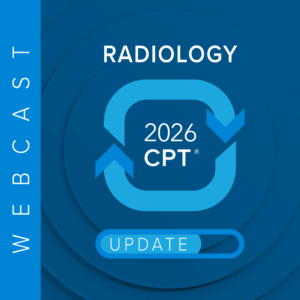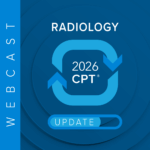Judging vaccine efficacy depends on reliable data.
The National Center for Health Statistics (NCHS) proposed the creation of codes for unvaccinated (Z28.310) and partially vaccinated for COVID-19 (Z28.311), and implementation will be on April 1, 2022, if approved. Recently, there has been discussion as to what constitutes “fully vaccinated” against SARS-CoV-2.
COVID-19 was discovered in December 2020. Operation Warp Speed resulted in the development of several extremely effective vaccines administered in the United States, in addition to other vaccines created around the world.
People sometimes derogatorily refer to these vaccines as being “experimental.” One article I read recently (see below) explains that the phraseology hearkens back to historical unethical experiments like Mengele’s during the Holocaust or the Tuskegee Syphilis Study.
Aren’t ALL vaccines experimental, initially? Either a new disease is discovered and we scramble to create a vaccine for the novel organism, or we discover or invent a new technology that might be utilized to prevent a longstanding disease. Even after the initial limited trials, we don’t know how people will react to the vaccine en masse, and we don’t know how well the pathogen is going to be managed by the vaccine in mass distribution. That takes a tincture of time and experience.
At what point does the general public accept the vaccine as no longer being considered experimental, but henceforth deemed tried and true?
Emergency use authorization (EUA) permits the rapid use of medical products that are not yet fully approved, and it is granted under specific circumstances. The emergency should represent a clear and present threat. There should be a reasonable expectation that the product will afford a benefit, and that the risks will be outweighed by the potential benefits. It should have the potential for being equal or superior to any currently available product.
“Experimental” implies that a product is still in the process of being vetted as being able to treat or prevent an illness with relatively few side effects. Once sufficient studies have been done, enough subjects have tested the product, and enough time has elapsed to gauge adverse effects, a product is no longer experimental. Even after a product is no longer considered experimental or investigational, data is still collected. Even large clinical trials do not have the power to detect very rare occurrences; this is why monitoring of even approved vaccines and medications is ongoing.
Although the Moderna and Johnson & Johnson vaccine have not received full approval, Pfizer’s vaccine is no longer under EUA for adults. It is considered approved for that population, although still under EUA for adolescents and children.
A total of 4.77 billion doses of COVID-19 vaccine have been administered worldwide as of Jan. 23. The data I am accessing and reporting on are related to the vaccines available in the United States (Pfizer, Moderna, and Johnson & Johnson/Janssen). There have been nine deaths linked to J&J’s vaccine and three deaths from the same cause, thrombosis with thrombocytopenia syndrome (TTS), linked to Moderna’s. There have been rare cases of anaphylaxis, Guillain-Barré Syndrome (GBS), and myocarditis/pericarditis related to vaccination, but no deaths from these adverse reactions.
The Vaccine Adverse Event Reporting System (VAERS) noted 11,000 other deaths among people who received vaccines (0.0022 percent), but vaccination was not deemed to be causative. If I get vaccinated and two days later I die of a myocardial infarction, an event that was preordained and unrelated, the vaccine shouldn’t be blamed for my heart attack. That is correlation without causation. To put this in perspective, there have been over 860,000 deaths in the United States and 5.6 million deaths worldwide clearly attributed to COVID-19.
There really is no argument about the efficacy of the COVID-19 vaccines. Although it was disappointing that they didn’t completely prevent contracting or transmitting the disease, there is no disputing that they prevent severe illness, hospitalization, and death (they are 90-percent effective at preventing Omicron hospitalization). It has, however, been an evolving situation as to how many doses are required to gain robust protection. This seems to offend some people’s sensibilities. I don’t blame them for wanting certainty. How many doses are we ultimately going to need?
The answer is, “we just don’t know yet.” The entire pandemic IS one big experiment. The answers are unfolding in real time. Therefore, what constitutes being “fully vaccinated” is still being determined. Obviously, we need to ascertain that to be able to determine if someone is only “partially vaccinated.”
Israel has been an ideal population to study COVID-19 and the vaccine process. It is a small-ish population of approximately 9 million people, and they were one of the first countries to initiate the mass vaccination process, making them early adopters. They also have excellent public health tracking and HMO monitoring.
There was avid uptake for adults initially, but that has proven quite different for the pediatric population. The data regarding the need for a booster shot came from the Israeli data during the Delta wave, when a significant decrease in immunity was noted after several months. In response to Omicron, the Israeli Health Ministry shorted their timing for booster eligibility from five down to three months. They have been piloting a fourth dose as well. What allows this to function as an experiment is that there is a population that is not up-to-date in their shots, so we can collect the data and compare what happens when immunity wanes or is absent.
The United States has been advocating for a booster shot, but the uptake has been tepid (40 percent of those eligible are boosted). People feel like Charlie Brown with Lucy handling the football – every time they try to comply and kick the ball by getting a shot, she yanks it away. They got fully vaccinated with two doses of mRNA or the single J&J shot, and then Lucy said we needed another shot as a booster.
If the goal is to prevent serious disease and death, we need to get whatever boosters it will take to maintain that. The Centers for Disease Control and Prevention (CDC) may have to move the goalposts again. This is not nefarious. This is not a capitalist, money-grabbing action. This is a response to waning protection from the vaccine antibody response.
There are many organizations, businesses, activities, and countries that are mandating “full vaccination” to participate or visit. As a vaccinator, I can attest that it is getting challenging to fit the stickers with the vaccine information on the limited-sized CDC COVID-19 vaccination card. And again, what constitutes “fully vaccinated?”
I support using “up to date” as opposed to “fully vaccinated.” If the timing interval adjusts, the definition of up to date will adjust as well. CDC messaging has been problematic. People are not appreciating the CDC snatching the football when they thought they had complied and were fully vaccinated.
In writing this article, I was going to propose that the government develop and maintain a nationwide electronic system keeping track of where each individual stands. When I Googled “QR code for vaccination,” I discovered that the Vaccine Administration Management System (VAMS) already exists. It is a CDC electronic program limited to jurisdictions, federal agencies, and organizations that have enrolled in it. It seems to assist in scheduling vaccination appointments, but the function I was looking for is also available. After a healthcare professional logs a COVID-19 vaccine dose for a recipient in the VAMS, a vaccine certificate or vaccine certificate QR code can be generated.
The computer system will need to know what the current appropriate dosing schedule is, to be able to check and see if the vaccine recipient is up to date. If an additional booster shot becomes necessary, like a yearly shot, the computer will know where the goalposts have been moved. This system should be universal and transferrable. If I get my first dose in Michigan and then move to Maine, both doses should easily be entered into the same record, accessible from any point of service.
It should be imperceptible to me, the vaccine recipient. I should be able to access the QR code wherever I am. There could be color-coding; green could signify up to date, yellow could mean partially vaccinated but overdue for a shot, and red could indicate not vaccinated. Healthcare providers could query the status on every visit, update people’s vaccinations as a matter of course, and enter new vaccinations into the electronic record.
Judging vaccine efficacy depends on reliable data. Coders need to be able to determine when Z28.311, Partially vaccinated for COVID-19, is applicable. Without knowing what “fully vaccinated” means, we can’t figure out who is only “partially vaccinated.” I think it means “not up to date” with the currently recommended vaccination schedule, whatever that may be at this moment in time
Programming Note: Listen to Dr. Erica Remer today as she cohosts Talk Ten Tuesdays with Chuck Buck at 10 Eastern.
















